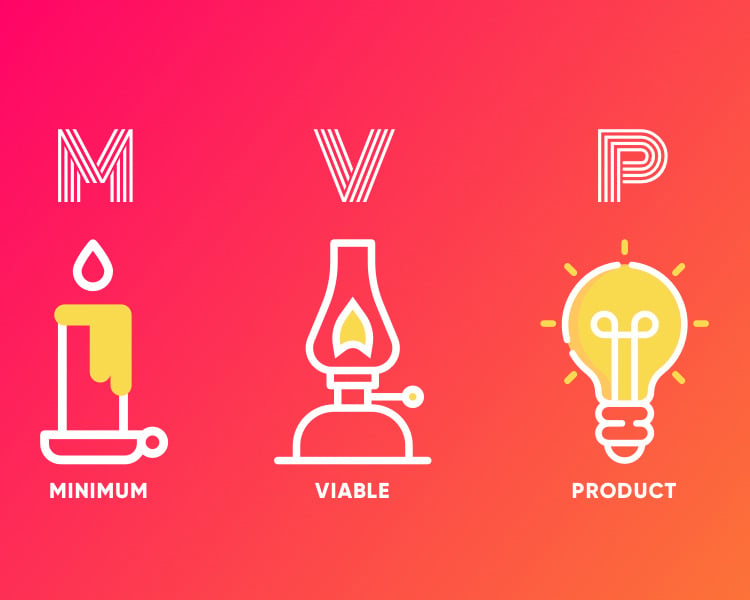When developing a product or application, MVP development services are a real project with real users performing real tasks. A Product MVP represents a product version that effectively resolves at least one issue a prospective client faces. We emphasize that the MVP of a product is working software for the simple reason that very often, this term is used to refer to something that is not it, for example:
- A landing page featuring a form for collecting contacts or a presentation is utilized in the lean approach to gauge market interest, yet this doesn’t constitute a fully functional and viable version at this stage;
- An untested product, just released by the dedicated development team, which cannot be used due to an abundance of bugs: this idea of MVP is common in technical teams but not viable;
- Software that requires a complex training course or complex integrations to get started. For very complex business niches, even such software can solve problems and be a successful product MVP, but for the mass market, you still need everything to be simple and clear. Otherwise, you will not be perceived.
Page Contents
MVP application
An MVP application is created to test the hypotheses on which the entire startup or IT product will be built. Accordingly, such an application should be:
- Thoughtful. Take some time to analyze your users’ personas, tasks, and pains and formulate the hypothesis you want to test.
- Obvious. No need to make the user guess what this software is for. Make everything simple and accessible, even if you are solving complex problems.
- Engaging. Successful products compete for the time the user spends in them rather than for utility, as it might seem at first glance. Make it so the user refuses all other substitute products and solves his problems only with you.
- Viral. In the modern world, buying contextual advertising to promote a software product is a losing strategy in advance. You need to ensure that users are eager to tell their friends about your product.
Accordingly, the development of an MVP comes down to creating such an application and making as few “childish” mistakes as possible at the start.
MVP Development

Source: classicinformatics.com
MVP development starts with analytics. It is assumed that by the time you approach development, you already have an idea and an “intuitive understanding” of what users need and will be willing to pay for in the future.
Now is the time to put these ideas to the test. What is checked at this stage:
- What problem or problem does your product solve? What’s innovative in what you do?
- Who will use this product, and who are your customers?
- How do they solve their problems now? What competitors, analogs, and substitutes exist on the market?
- What is your market, and what is its volume? How fast does it grow? Who is the “biggest and scariest” in this market?
- What will your business model be? How fast will you grow? What will make users talk about you? What will make users switch to your product?
- What kind of team do you have? What experience? What personally motivates you to engage in this product? What results do you want to achieve?
Why you need it: good analytics will help you avoid stepping on a rake and working out an idea before you write the first line of your MVP code.
Creating an MVP

Source: netsolutions.com
Once the analysis has shown a clear need, persona, and the boundaries of the minimum viable product hypothesis, you can start development. But still needs to be a product.
Creating and testing an MVP prototype
With strong UX expertise, we can first save development costs by testing prototypes and designs. This stage will help you correct possible shortcomings and make the product more understandable for users. If it is a hardware product that involves electronics, we can create a prototype using the hardware that is common on the market. Testing the MVP prototype is another part of the lean approach that saves money and gets feedback from target customers as early as possible.
Creating an MVP Application
Once you’ve tested the prototype, you’ll need code, and you’ll have to hire remote developers to do that. Evergreen is the right team to build an MVP because we have the experience, competencies, and business experience to build our products. In the MVP phase, we can save you a lot of money by getting it right the first time and save you years of experimentation we’ve already gone through.
This does not mean that our development will be the cheapest. Just not: the cheapest development will be for those who have no experience at all. But our development will be profitable for you, and together with you, we will calculate how much it makes sense to spend this or that amount. It is very important that with us, the MVP stage will be completed. According to statistics, many startups fail because the development team cannot launch the minimum version. In the case of Evergreen, this risk does not exist. We launch projects on time and within budget. A successful MVP will mean that you have found a problem/solution fit. To do this, you must launch it, test it on users, and collect positive feedback.





